Wasted chicken feed drives me nuts and I was determined to build a feeder that would put an end to chickens billing feed out onto the ground. After much research, contemplating dozens of designs and several iterations of my own, I am now happy with my PVC feeder. There are no longer piles of wasted grain on the floor, which makes me, my chickens and my feed budget happy. Mine cost approximately $12.00 to build and was finished in 20 minutes.
This is the finished feeder in my “Little Deuce Coop.” Side view of the feeder.MATERIALS LIST:
A PVC pipe or irrigation tubing, cut to the length that will fit your chosen location. (I used a 4″ wide pipe for the feed and a smaller one for the oyster shell, various sizes will work)
A PVC pipe cap for the top. (I used a 4″ cap, found in plumbing section of Home Depot)
A high corner litter pan
A piece of scrap wood
Extra long zip ties
3 screws
3 washers
A drill
LET’S MAKE IT!
- Drill four holes in the pipe, two on each side where they will align with holes in stud. (see photo above)
- Drill two holes through the stud at measured increments that mirror the holes in the pipe. ( photo below)
- Mark where the “feed dish” will be mounted. The pipe should sit approximately 1/4″-1/2″ above the bottom of the feed dish. If the dish is too close to the bottom of the pipe, the feed will not flow out into the dish.
4. Secure the scrap piece of wood to the stud with screws and washers. (as shown below)
For an oyster shell or grit dispenser:
- Pre-drill one hole in a PVC pipe cap . Cap should be two inches wider than the pipe.
- Secure the pipe cap to the stud with a screw and washer.
For a feed dispenser using a corner litter pan for feed:
- pre-drill two holes in the back of the litter pan where it will mount to the stud. Space them so that the washers align one above the other
- Secure the corner litter pan to the stud with screws and washers.
- Thread a zip tie through the two holes in the pipe and then the two holes in the stud and secure the zip tie to itself.
- Do the same for the second set of holes in the pipe and stud.
*NOTE: If installing feeder in the run, be sure to securely cover it at dusk to guard against rodents.
Click here for more tips on rodent control in and around the coop.**
Kathy Shea Mormino
Affectionately known internationally as The Chicken Chick®, Kathy Shea Mormino shares a fun-loving, informative style to raising backyard chickens. …Read on


shop my SPONSORS
Wasted chicken feed drives me nuts and I was determined to build a feeder that would put an end to chickens billing feed out onto the ground. After much research, contemplating dozens of designs and several iterations of my own, I am now happy with my PVC feeder. There are no longer piles of wasted grain on the floor, which makes me, my chickens and my feed budget happy. Mine cost approximately $12.00 to build and was finished in 20 minutes.
This is the finished feeder in my “Little Deuce Coop.” Side view of the feeder.MATERIALS LIST:
A PVC pipe or irrigation tubing, cut to the length that will fit your chosen location. (I used a 4″ wide pipe for the feed and a smaller one for the oyster shell, various sizes will work)
A PVC pipe cap for the top. (I used a 4″ cap, found in plumbing section of Home Depot)
A high corner litter pan
A piece of scrap wood
Extra long zip ties
3 screws
3 washers
A drill
LET’S MAKE IT!
- Drill four holes in the pipe, two on each side where they will align with holes in stud. (see photo above)
- Drill two holes through the stud at measured increments that mirror the holes in the pipe. ( photo below)
- Mark where the “feed dish” will be mounted. The pipe should sit approximately 1/4″-1/2″ above the bottom of the feed dish. If the dish is too close to the bottom of the pipe, the feed will not flow out into the dish.
4. Secure the scrap piece of wood to the stud with screws and washers. (as shown below)
For an oyster shell or grit dispenser:
- Pre-drill one hole in a PVC pipe cap . Cap should be two inches wider than the pipe.
- Secure the pipe cap to the stud with a screw and washer.
For a feed dispenser using a corner litter pan for feed:
- pre-drill two holes in the back of the litter pan where it will mount to the stud. Space them so that the washers align one above the other
- Secure the corner litter pan to the stud with screws and washers.
- Thread a zip tie through the two holes in the pipe and then the two holes in the stud and secure the zip tie to itself.
- Do the same for the second set of holes in the pipe and stud.
*NOTE: If installing feeder in the run, be sure to securely cover it at dusk to guard against rodents.
Click here for more tips on rodent control in and around the coop.**



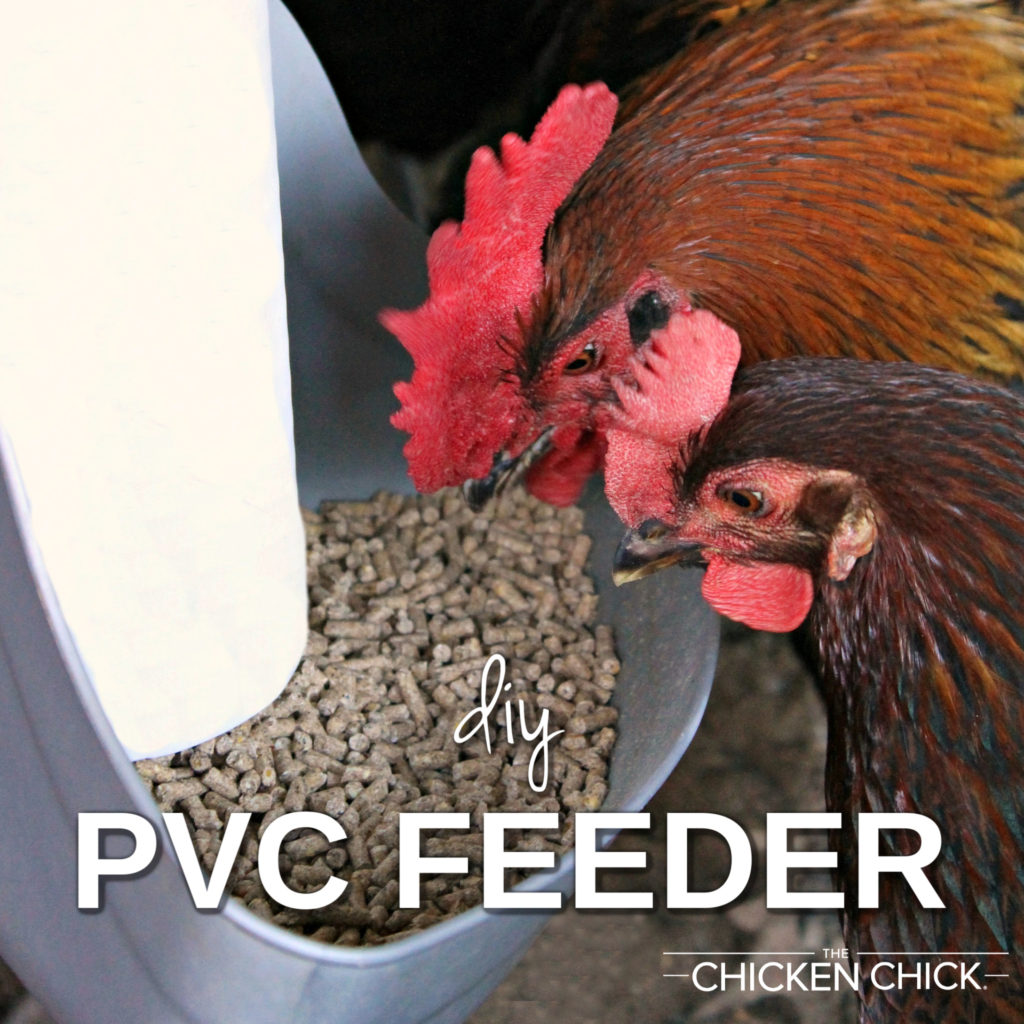
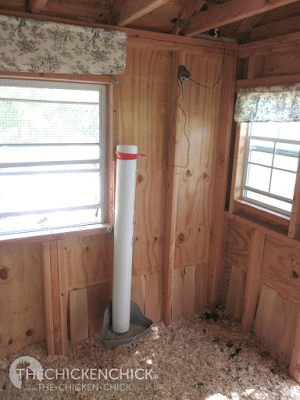
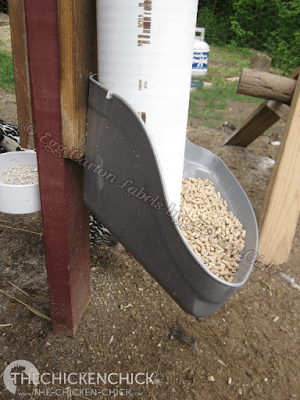
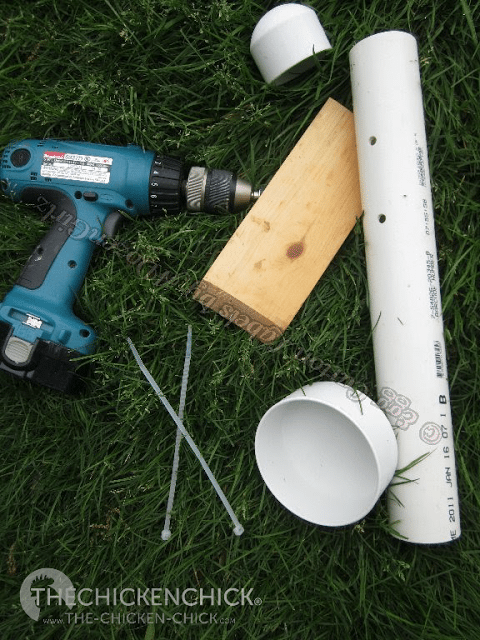
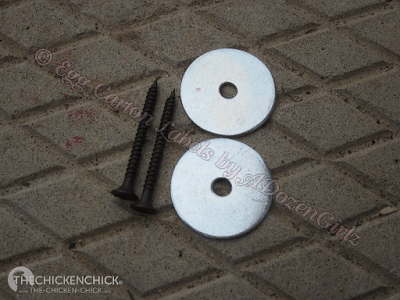
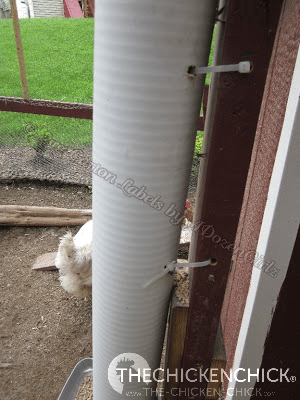
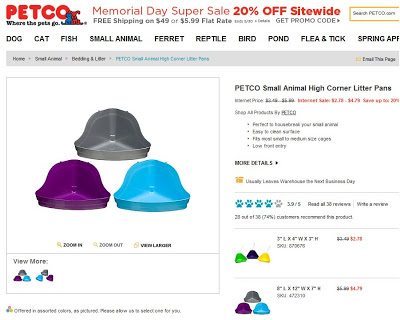
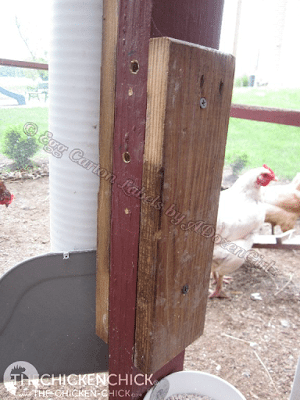
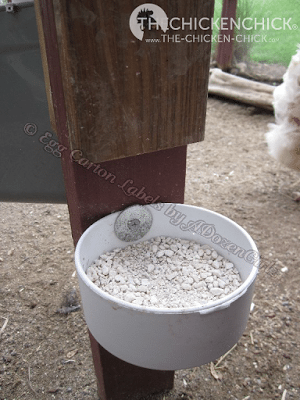
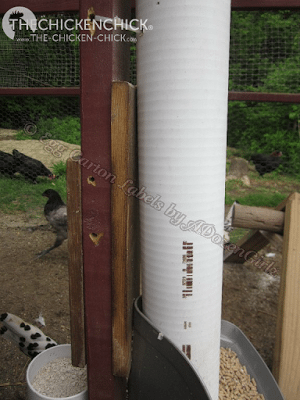
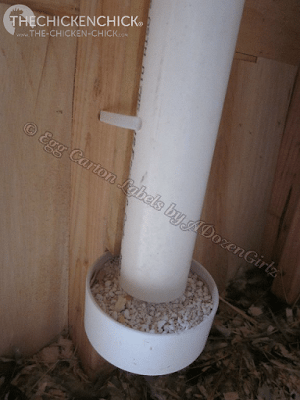
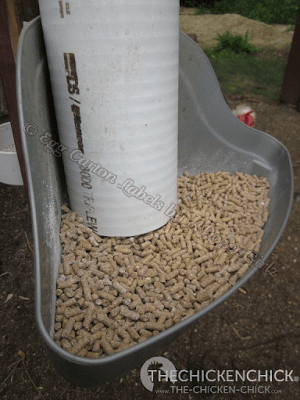
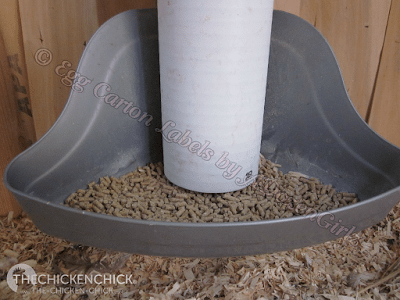
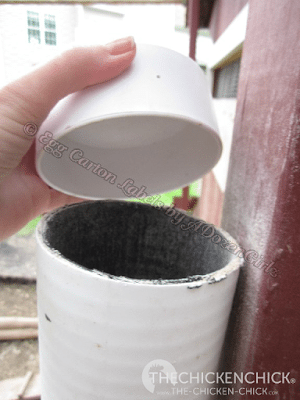
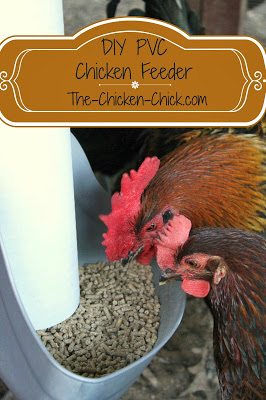

























ive made a thing my goat menerals! but i used a Y pice at the bottom! i may try to make a few of these!!! bobby sue kbjabat@att.net
Hi, I'm very new to all this. My chicks come next week, but we're modifying a shed for the coop now. We've purchased the PVC pipe and high end litter pan. But I have two questions. Does the litter pan have to be placed at a slight tilt forward so the feed doesn't get hung up under the pipe instead of flowing forward and to the sides, or will that happen naturally? And, would a larger size (double) litter pan work? Or will the chickens roost on the open area and poop on the feed? There would be about six… Read more »
The litter pan doesn't need to be tilted slightly as long as the PVC pipe rests against the back of it so that feed can't get between it and the litter pan. In practice, the litter pan naturally tilts a little forward, which is enough. The litter pan should be installed slightly below the bottom of the feeder so that grain can flow out easily. If you find that grain isn't coming out at the rate you would like, simply cut a small notch in the front of it. Enjoy your new feathered pets and please let me know if… Read more »
Love, love this idea. Will be sure to share with my readers. Brilliant Idea!
Thanks Chicken Jane. :)
I am sure she probably uses a feed scoop to full the pipes with feed. That is how I am going to fill mine as soon as we get them made. And I might even fix a spout to come out of some of my chicken runs on the days I do not have to go all the way in to feed. I will just have the spout coming outside of the runs so i can fill the feed pipes from the outside.
How about this question… how do you fill the feeder? I can't imagine trying to pour feed into a 4" pipe from a 50# bag of feed. I'm sure there is a simple explanation?
I carry the feed in a bucket from the basement and add it into the feeder using a recycled 32 ounce yogurt container. :)